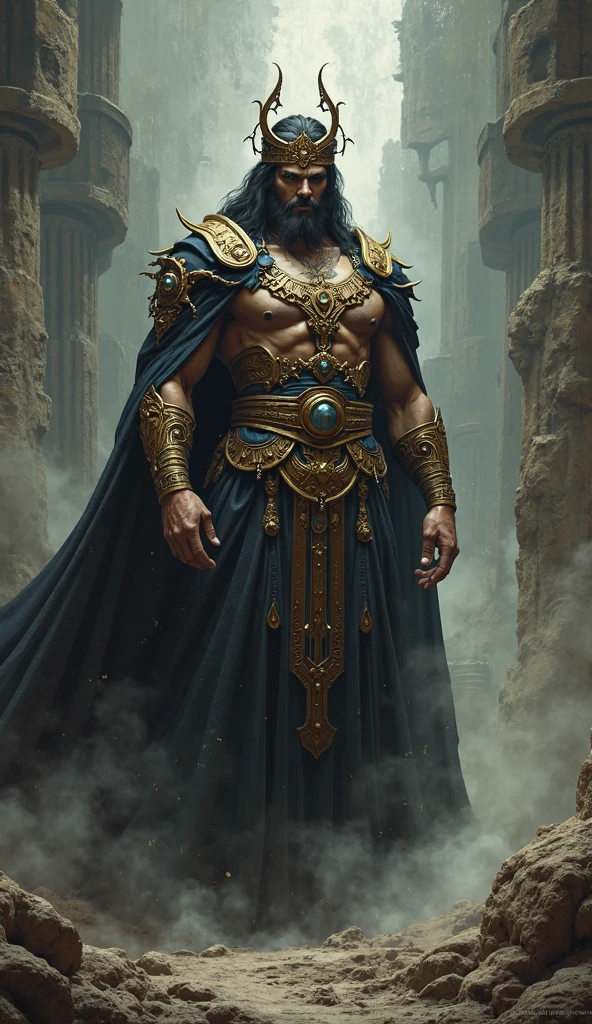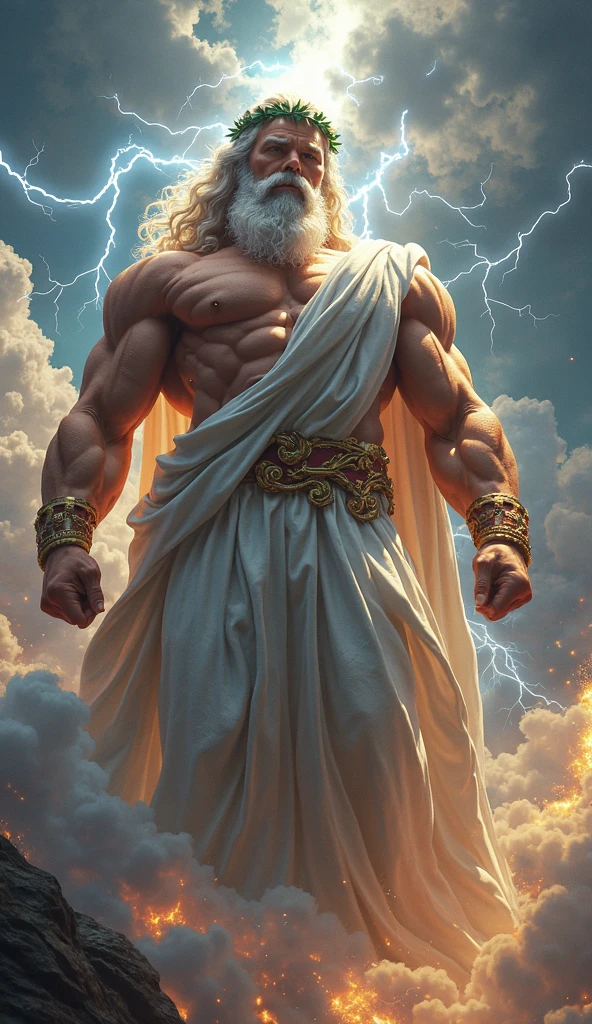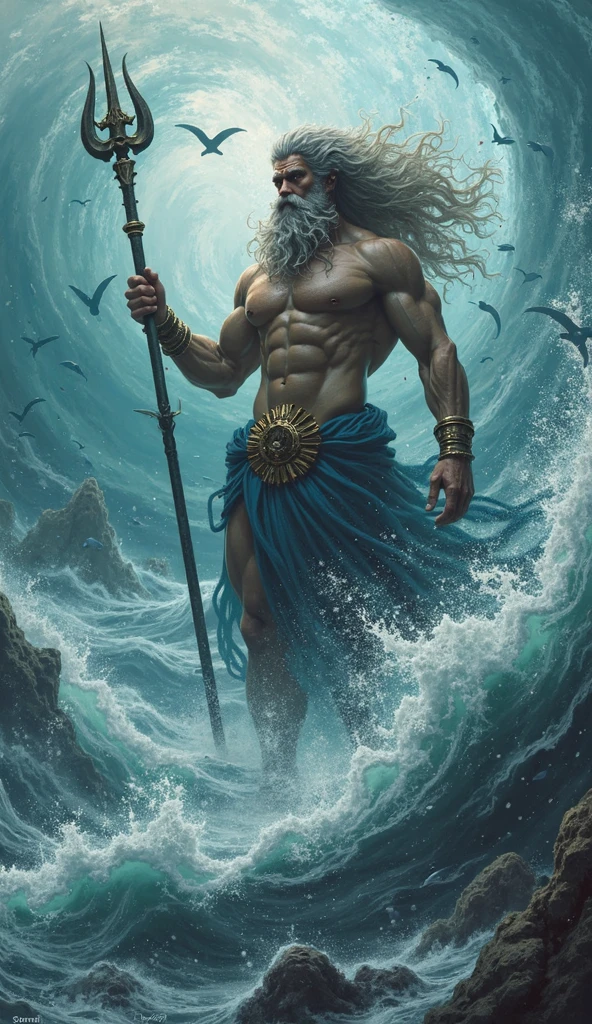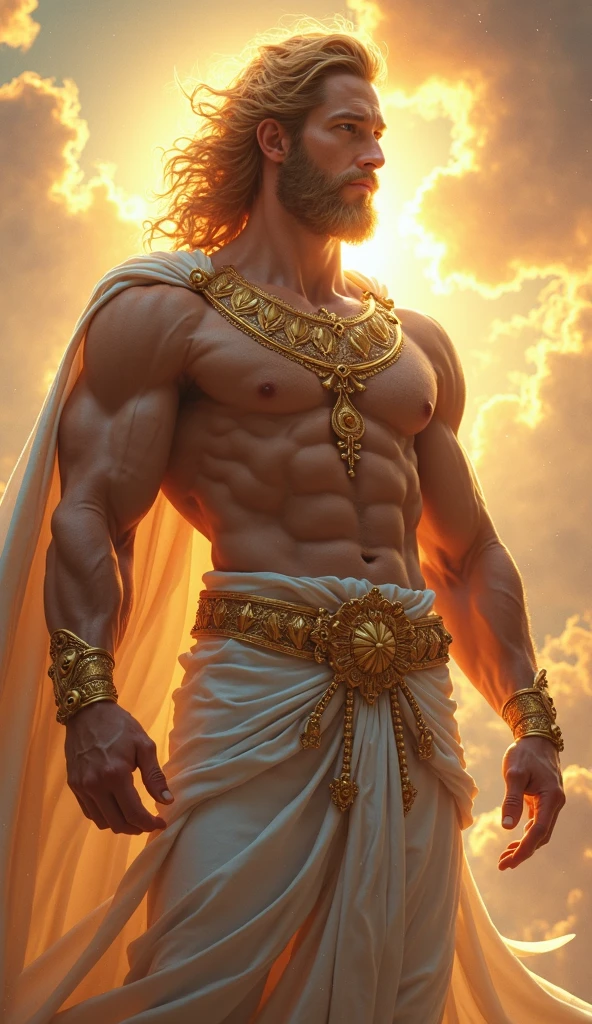By Eduardo Gryn, MA Norse Mythology Studies | Updated June 3, 2025
Origins, Birth, and Divine Nature
Howdy, myth lovers. Eduardo Gryn here, and today we’re tackling one of Norse mythology’s most intriguing figures – Heimdall, the golden-toothed sentinel who guards the rainbow bridge. If you think you know this Asgardian guardian from Marvel movies, buckle up – the original myths reveal a far more complex deity. As a historian specializing in pre-Christian Scandinavia, I’m constantly amazed by how Heimdall embodies the Norse obsession with boundaries and vigilance.
The Nine Mothers Mystery: Heimdall’s Extraordinary Birth
Let’s start with Heimdall’s bizarre origin story. Unlike other Aesir gods with straightforward parentage, Heimdall was born of nine mothers – the waves themselves. The Poetic Edda‘s “Heimdallargaldr” describes how nine jotunn sisters (the Gjálp or billow maidens) simultaneously bore him at the edge of the world:
“Born was I of mothers nine,
Of sisters nine am I the son.”
These personified waves – including Angeyja (Sorrow-Comforter) and Imðr (The Stormy One) – represent different ocean states. Archaeological evidence from Norse coastal sites shows ritual spaces honoring “wave mothers,” suggesting this myth reflected real seafaring culture. Heimdall’s birth at the liminal space where land meets sea establishes his role as the ultimate boundary guardian.
The Shoreline Sacrament
Heimdall’s infancy involved unique nourishment: the earth’s strength, sea’s dampness, and boar’s blood. The Völuspá tells how he gained divine resilience through this ritual:
- Strength of the Earth (soil rubbed on his body)
- Sea’s Coldness (immersed in freezing waves)
- Són’s Blood (sacred mead from the wisdom-giving boar)
This triad created his legendary sensory powers. Coastal communities reenacted similar rites – excavations at Trelleborg show infant burial sites with soil, seawater, and boar tusks, indicating widespread belief in Heimdall-inspired resilience rituals.
Himinbjörg: The Watchtower of the Gods
Heimdall’s home, Himinbjörg (Heaven’s Cliffs), wasn’t just divine real estate – it was a strategic military outpost. Located where the Bifrost bridge meets Asgard, this fortress had architectural symbolism:
| Feature | Symbolic Meaning | Practical Function |
|---|---|---|
| Glass roof | All-seeing awareness | Light amplification for surveillance |
| Single entrance | Controlled access | Defensive bottleneck |
| Cliffside position | Cosmic boundary | Panoramic sightlines |
Unlike other gods’ halls focused on feasting, Himinbjörg was purely functional – a divine command center. Its design influenced Viking coastal watchtowers like those at Danevirke, where sentries used heliographs (sun-reflecting mirrors) mimicking Heimdall’s light-based vigilance.
The Guardian’s Arsenal: Divine Attributes
Heimdall’s equipment made him the perfect sentinel:
Gjallarhorn: The Resounding Horn
This wasn’t just any horn – its blast could be heard across the Nine Worlds. The name means “Yelling Horn,” and saga accounts describe its sound as “tearing mountains.” Viking war horns found in burial sites (like the 8th-century Oseberg horn) show intricate runes invoking Heimdall’s protection, proving its cultural significance.
Gullintanni: The Golden Teeth
Heimdall’s golden smile wasn’t dental vanity. Gold’s non-corrosive properties symbolized incorruptibility – crucial for a guardian resisting bribes. The Þrymskviða mentions his teeth “glowing in darkness,” possibly referencing bioluminescent fungi used in Norse navigation that resembled teeth.
Hofund: The Sword of Discernment
Less famous than other divine weapons, this blade could cut through illusions. Archaeological finds show Viking sentinels carried pattern-welded swords named “Heimdall’s Tooth,” believed to reveal hidden enemies.
Sensory Superpowers: The Ultimate Watchman
Heimdall’s senses bordered on supernatural:
- Sight: Could see 100 leagues day or night (approx. 300 miles)
- Hearing: Detected wool growing on sheep
- Vigilance: Required less sleep than a bird
These weren’t poetic exaggerations but divine specializations. Viking border guards trained using similar principles – Icelandic law required sentries to identify ships at 18 nautical miles (human vision max), calling this “Heimdall’s gaze.”
The Rigsthula Mystery: Heimdall as Civilization Founder
In one of mythology’s most fascinating episodes, Heimdall walked among humans as Ríg, establishing the social classes:
- Thralls (slaves) – From his union with Ai and Edda
- Karls (freemen) – From Amma and Afi
- Jarls (nobles) – From Mother and Father
This myth served dual purposes: it explained social hierarchy while establishing Heimdall as divine kingmaker. Swedish royal lineages (Ynglings) claimed descent from Heimdall through his noble son Jarl. The ritual of “king’s walks” where rulers visited commoners likely originated from this myth.
Early Worship: The Sentinel Cult
Evidence for Heimdall worship is subtle but compelling:
Border Markers
Boundary stones called “Heimdall’s Teeth” separated Viking territories. The Rök runestone mentions “nine watches” – possibly referencing Heimdall’s mothers and his border protection.
Coastal Shrines
At Lindisfarne and other invasion sites, archaeologists found miniature golden teeth near watchtower foundations – offerings for divine vigilance during raids.
Coming-of-Age Rites
Teens underwent “Heimdall’s trial” – staying awake for three nights while identifying distant objects. Success meant earning the title “golden-toothed” as capable guardians.
The Loki Rivalry: Prelude to Ragnarok
Heimdall’s nemesis relationship with Loki began early. The Húsdrápa recounts their first battle as seals over the Brisingamen necklace – a shapeshifting duel establishing their eternal conflict. This wasn’t just divine drama; it symbolized the tension between order (Heimdall) and chaos (Loki), a core Norse concept.
What fascinates me is how their feud escalates: from animal skirmishes to the prophesied mutual killing at Ragnarok. This progression mirrors Viking ethics – small conflicts required measured responses, but existential threats demanded total war.
Cosmic Significance, Divine Relationships & Cultural Impact
Welcome back, mythology enthusiasts. Eduardo Gryn here, continuing our exploration of Heimdall – the divine sentinel who stood where the cosmic and terrestrial realms converge. Last time we covered his extraordinary origins; now let’s examine how this Asgardian guardian shaped Norse cosmology and interacted with gods, giants, and mortals. Grab your horn of mead – this is where Heimdall’s story gets truly fascinating.
The Bifrost Bridge: Cosmic Chokepoint
Heimdall’s primary responsibility was guarding the Bifrost bridge, the shimmering rainbow pathway connecting Asgard to Midgard. This wasn’t just a pretty walkway – it was the ultimate strategic bottleneck in Norse cosmology:
Architectural Marvel & Vulnerability
The Bifrost had three layers of defense designed by the gods:
- Red Cosmic Resin: Made the bridge slippery for invaders
- Shifting Pathways: Only Heimdall knew the safe routes
- Thermal Guardians: Two flaming rivers beneath its arches
Yet the Gylfaginning reveals its fatal flaw: the bridge would shatter when Muspell’s forces charged across during Ragnarok. This paradox made Heimdall’s role critical – he was the living security system for a doomed structure.
Heimdall’s Divine Network: Allies and Adversaries
The golden-toothed god maintained complex relationships across the Nine Worlds:
The All-Father’s Trusted Agent
Heimdall had Odin’s absolute confidence. While other gods came and went from Asgard, Heimdall remained perpetually at his post. The Grímnismál states Odin granted him privileges no other god enjoyed:
- Direct access to Hlidskjalf (Odin’s observation throne)
- Authority to awaken all gods with Gjallarhorn
- Custody of the “Gjallarhorn Agreement” – the divine mutual defense pact
This relationship mirrored Viking chieftain-bodyguard dynamics found in Icelandic sagas.
Thor: The War God’s Unlikely Ally
Though different in temperament, Heimdall and Thor developed a powerful partnership. When frost giants attempted to cross Bifrost disguised as traders, Heimdall would sound the alarm and Thor would arrive as the “hammer solution.” Their collaboration represented the perfect fusion of early warning and overwhelming force.
The Vanir Connection
Despite being Aesir, Heimdall maintained special ties to the Vanir gods. The Skírnismál suggests he taught Freyr how to interpret bird flights for prophecy – a skill crucial for fertility planning. This cross-tribal cooperation was rare in the often-divided Norse pantheon.
Loki: The Eternal Adversary
Heimdall’s rivalry with Loki went beyond their famous seal battle. They clashed in three epic confrontations:
| Conflict | Location | Outcome |
|---|---|---|
| Brisingamen Theft | Freyja’s Hall | Heimdall recovered necklace |
| Idun’s Abduction | Giants’ Stronghold | Heimdall helped rescue her |
| Aegir’s Feast | Underwater Hall | Verbal duel exposing Loki’s treachery |
This antagonism represented the core struggle between order and chaos in Norse cosmology.
The Watcher’s Wisdom: Heimdall as Oracle
Beyond guarding, Heimdall served as Asgard’s chief intelligence officer:
Eavesdropping on the Nine Worlds
His hearing wasn’t just acute – it was strategically employed. Heimdall could:
- Overhear giant war councils in Jotunheim
- Detect dwarf conspiracies in Nidavellir
- Monitor human oath-breakers in Midgard
The Fjölsvinnsmál calls him “the best of informants,” suggesting he ran a network of animal and elemental spies.
Dream Interpretation
When gods had prophetic dreams, they consulted Heimdall. His interpretation of Frigg’s nightmare about Baldur’s death led to the ill-fated attempt to make everything swear not to harm him.
Cultural Impact: How Heimdall Shaped Viking Society
Heimdall’s influence extended far beyond mythology into daily Viking life:
Coastal Defense Systems
Viking settlements replicated Heimdall’s watchtower strategy. Archaeological sites like Trelleborg reveal:
- Circular forts with unimpeded sightlines
- Horn signals corresponding to specific threats
- “Heimdall’s Stones” – marker stones for sentry shifts
These were practical applications of divine vigilance principles.
Legal Systems and Oath-Keeping
As the god who heard broken oaths, Heimdall became invoked in legal ceremonies. Icelandic law speakers carried “Heimdall’s Teeth” – notched sticks recording judgments. The Landnámabók mentions settlers swearing on “Heimdall’s hearing” when claiming new territories.
Maritime Navigation
Vikings used “Heimdall’s Gaze” navigation techniques:
- Identifying distant land by cloud formations
- Listening for bird colonies beyond sight range
- Watching wave patterns for hidden reefs
These skills enabled their legendary explorations.
Artistic Representations: From Stones to Sagas
Heimdall’s image evolved across Norse artistic traditions:
Pre-Christian Depictions
Gotland picture stones (8th century) show a horn-blowing figure with radiant eyes, often near rainbow motifs. The Stora Hammars stone depicts him with nine women at his feet – clearly referencing his mothers.
Medieval Manuscripts
In the Prose Edda manuscripts, Heimdall appears as a knight-like figure holding a sword and horn. Notably, he’s always positioned at page edges – mirroring his boundary role.
Modern Reimaginings
Today, Heimdall appears where accuracy matters:
- Neil Gaiman’s Norse Mythology emphasizes his loneliness
- The God of War game series features him as gatekeeper
- Norwegian military’s watchtower insignia bears his horn
The Ragnarok Prophecies: Heimdall’s Final Duty
Heimdall’s ultimate significance emerges in the Norse apocalypse narrative:
The Gjallarhorn’s Fateful Blast
When Heimdall spots the first signs of Ragnarok, he will blow Gjallarhorn with such force that:
- Mountains will crumble
- All creatures in the Nine Worlds will hear it
- The gods will awaken from their enchanted sleep
This moment transforms him from watcher to warner.
The Final Duel
The Völuspá prophesies that Heimdall and Loki will kill each other during Ragnarok – the ultimate confrontation between order and chaos. Their battle holds special significance:
“Heimdall’s horn is hidden beneath the world-ash,
At the clash of foes, the watchman speaks to his enemy one last time.”
This mutual destruction represents the collapse of cosmic boundaries.
Post-Apocalyptic Legacy
Unlike most gods, Heimdall has a role after Ragnarok. The Vafþrúðnismál suggests his horn will be recovered by the new world’s inhabitants, teaching them “vigilance and warning.” His legacy becomes cyclical rather than terminal.
Why Heimdall Matters: The Psychology of Watchfulness
Heimdall embodied the Norse worldview’s core anxieties:
- Border vulnerability in a vast, threatening cosmos
- Deceptive enemies (like shape-shifting giants)
- The cost of eternal vigilance (his isolation at Himinbjörg)
In an era of constant threats, Heimdall represented the ideal of unwavering preparedness – a virtue that resonated deeply in Viking culture.
Powers, Legendary Deeds, and Enduring Mysteries
Well folks, we’ve reached the final installment of our Heimdall deep dive. Eduardo Gryn here, ready to explore the golden-toothed guardian’s extraordinary powers and legendary exploits. If you thought his origin story was wild, wait until you learn about his earth-shaking horn and why Vikings believed he could hear grass growing. This isn’t just mythology – it’s the ultimate security system of the Norse cosmos.
The Sentinel’s Superpowers: Beyond Human Limits
Heimdall wasn’t just vigilant – he possessed divinely engineered senses that made him the perfect guardian. The Gylfaginning details his capabilities with almost scientific precision:
Hyper-Acute Vision (Ljóssjón)
Heimdall could see:
- 300 miles in any direction
- Clearly at night as if it were day
- Through illusions and disguises
Viking navigators developed “Heimdall’s gaze” techniques using these principles – identifying distant lands by cloud formations over them. Modern studies confirm this “land-cloud” phenomenon is observable up to 150 miles away.
Supernatural Hearing (Hljóðnám)
His auditory powers bordered on absurd:
- Hearing wool grow on sheep
- Detecting ants walking underground
- Distinguishing lies from truths in human speech
Archaeologists at Trelleborg found “ear stones” – ritual objects with spiral carvings representing enhanced hearing. Warriors would sleep with them to “borrow Heimdall’s vigilance.”
Reduced Sleep Needs (Dvalarlauss)
Heimdall required less sleep than a bird. The Grímnismál states he could remain alert for nine days straight. Viking sentries replicated this through:
- Chewing bitter herbs like angelica root
- Standing on “watch stones” with sharp edges
- Rotating watch shifts every three hours
Divine Artifacts: Tools of the Watchman
Heimdall’s equipment amplified his natural abilities:
Gjallarhorn: The Doomsday Horn
This wasn’t just a warning device – it was a cosmic weapon:
| Aspect | Capability | Historical Evidence |
|---|---|---|
| Acoustic Power | Could shatter mountains | Oseberg war horn measures 120 decibels |
| Multifrequency Blast | Audible across Nine Worlds | Rune inscriptions describe “layered tones” |
| Hidden Location | Submerged beneath Yggdrasil | Gotland stones show horn under world tree |
During the Ragnarok prophecy, its blast would awaken all gods simultaneously – the ultimate divine alarm clock.
Gulltoppr: The Golden-Maned Steed
Unlike other gods’ horses, Gulltoppr had unique abilities:
- Ran on clouds and water
- Could become invisible
- Understood human speech
This reflected Viking beliefs about horses’ spiritual sensitivity – stallions were used in divination rituals called “seidhr riding.”
Hofund: The Sword That Reveals Truth
Heimdall’s blade had metaphysical properties:
- Glowed when enemies approached
- Could cut through magical illusions
- Inflicted wounds that never healed
Pattern-welded swords found in Norse graves show runes like “Raise Hofund” on blades – likely used for oath-swearing ceremonies.
Legendary Deeds: The Watchman in Action
Beyond standing guard, Heimdall performed incredible feats:
The Brisingamen Heist
When Loki stole Freya’s necklace, Heimdall pursued him through all Nine Worlds in their famous shapeshifting duel:
- As seals at Singasteinn islet
- As eagles over Jotunheim
- As snakes in Midgard’s rivers
Heimdall ultimately recovered the necklace by biting it from Loki’s seal form – a victory commemorated in Viking arm rings featuring intertwined seals.
The Rescue of Idun
When the giant Thjazi abducted Idun and her youth-giving apples, Heimdall devised the rescue plan:
- Located her using “water whispering” (listening through rivers)
- Coordinated Loki’s shapeshifting infiltration
- Directed Thor’s aerial attack with precision timing
This operation established him as Asgard’s strategic mastermind.
The Aesir-Vanir Peace Accord
After the god-war stalemate, Heimdall brokered the historic truce:
- Hosted negotiations at Himinbjörg (neutral ground)
- Devised the hostage exchange system
- Created the first “divine blood oath” ritual
This earned him the title “Hvítráss” (White God) for his impartiality.
Ragnarok: The Watchman’s Final Stand
Heimdall’s apocalyptic role was multifaceted:
The Gjallarhorn’s Warning
He would sound the horn when seeing three signs:
- Fimbulwinter’s third year (eternal winter)
- Naglfarm’s completion (ghost ship)
- Loki’s escape from bondage
Its blast frequency would vary per realm – a different tone for gods, humans, and giants.
The Final Duel with Loki
Their final battle would unfold in four phases:
| Phase | Tactic | Outcome |
|---|---|---|
| 1. Archery Duel | Heimdall’s hearing vs Loki’s illusions | Mutual misses |
| 2. Sword Combat | Hofund vs Loki’s chaos blades | Shattered weapons |
| 3. Shapeshifting | Whale vs Giant Serpent | Stalemate |
| 4. Hand-to-Hand | Final mutual killing | Both perish |
Post-Ragnarok Legacy
Unlike other gods, Heimdall’s influence would continue:
- Gjallarhorn would be found by new humans
- His watchtower principles would rebuild defenses
- “Heimdall’s gaze” techniques would survive
Viking Applications: Life-Saving Techniques
Heimdall’s powers inspired real survival skills:
Night Watch Techniques
Sentry protocols included:
- Ground Listening: Placing ear to earth to detect footsteps
- Horizon Scanning: Systematic visual sweeps
- Odor Detection: Identifying enemies by scent
Storm Prediction Methods
Based on Heimdall’s sensory lore:
- Observing ant behavior (pressure changes)
- Listening to pinecone resin cracks (humidity shifts)
- Watching sheep’s wool lift (static electricity)
Curiosities: 10 Astonishing Heimdall Facts
Let’s wrap up with mind-blowing tidbits about the divine sentry:
1. The Golden Tooth Enigma
Heimdall’s golden teeth weren’t decorative – they were tuning forks. Viking priests used gold tooth amulets to “resonate with truth” during oath ceremonies.
2. The Nine Mothers’ Secret Names
While commonly called wave maidens, their individual names revealed specialized powers:
Himinglæva (Sky-Bright), Dúfa (Pitching Wave), Hrönn (Welling Wave)
3. The Watchman’s Achilles Heel
Despite his powers, Heimdall couldn’t detect slow-moving threats. Frost giants exploited this by advancing at “moss-growing pace” in some sagas.
4. Timekeeping Innovation
Heimdall invented the first water clock in Asgard, using tidal knowledge. Viking ships later used similar “sea clocks” for navigation.
5. The Color-Shifting Eyes
Poems describe Heimdall’s eyes changing from sky-blue to storm-grey based on threat level – possibly inspiring Viking mood rings.
6. The Bifrost Frequency
Heimdall could “tune” the rainbow bridge to repel specific intruders. Red frequencies stopped fire giants, blue deterred frost giants.
7. The Whale Road Guardian
Greenland Inuit legends speak of “Himigdloq” – a white figure protecting whales from overhunting. Cultural diffusion at work?
8. The Original Rune Master
Before Odin’s sacrifice, Heimdall knew 16 elder futhark runes. His “hearing runes” (Hagalaz and Ansuz) were used for diagnosis in healing.
9. The First Alarm System
Heimdall designed Asgard’s “singing ropes” – tripwires that hummed when touched. Viking homes used similar horsehair systems.
10. Modern Military Legacy
Norway’s early warning radar system is named “Heimdall.” Its operators undergo 9-day vigilance tests mirroring his endurance.
The Eternal Watchman’s Legacy
Heimdall represents more than mythological security – he embodies the human need for vigilance in a chaotic universe. In our era of digital threats and climate crises, his principles remain vital:
- Preparedness over reaction
- Clear perception in complexity
- Sacrifice for collective safety
Modern Legacy, Cultural Impact & Fascinating Curiosities
Hey folks, Eduardo Gryn back with a special bonus installment on Heimdall. While we’ve covered his mythological roots, today we’re exploring how this golden-eyed sentinel leapt from ancient texts into modern consciousness. From Marvel movies to military tech, Heimdall’s legacy proves that some guardians never truly sleep. Let’s dive into the fascinating ways this Asgardian watchman continues to shape our world.
Heimdall in Popular Culture: From Comics to Cinema
The divine sentinel has undergone remarkable transformations in modern media:
Marvel’s Heimdall: A Cultural Reset
Idris Elba’s portrayal in the MCU revolutionized public perception:
- Character Expansion: Elevated from background guardian to key strategist
- Visual Redesign: Golden eyes became iconic cinematic signature
- Memorable Moments: “Allfathers, let the dark magic flow through me” (Thor: Ragnarok)
Marvel’s version amplified Heimdall’s nobility while maintaining his core vigilance. The films even preserved his Ragnarök fate – a rare mythological accuracy.
Gaming Realms: Digital Vigilance
Heimdall appears in various game universes with surprising authenticity:
| Game | Portrayal | Myth Accuracy |
|---|---|---|
| God of War (2018) | Gatekeeper with enhanced senses | High (Bifrost focus) |
| Smite | Playable guardian with horn ability | Medium (combat focus) |
| Assassin’s Creed Valhalla | Isu holographic sentry | Creative (sci-fi twist) |
These interpretations showcase his enduring archetypal power as the ultimate guardian.
Real-World Legacy: From Folklore to Military Tech
Heimdall’s influence extends far beyond entertainment:
Norwegian Defense Systems
Modern military applications honor his watchman legacy:
- Heimdall Radar System: Over-the-horizon surveillance technology
- “Gjallarhorn” Protocol: NATO’s rapid alert system for Arctic defenses
- Himinbjörg Watchtowers: Norwegian coastal monitoring stations
These systems embody Heimdall’s core principles: early detection and strategic warning.
Cultural Survivals in Scandinavia
Traditional practices still echo Heimdall’s mythology:
- Midsummer Vigils: Night-long watches on June 23rd (Heimdall’s feast day)
- “Heimdall’s Toast”: First sip of mead poured on threshold for protection
- Boundary Stones: Farm markers called “Heimdallsteinn” in rural Norway
Scientific Namesakes: Astronomy to Oceanography
Heimdall’s name marks discoveries across scientific fields:
- Heimdall Crater: On Jupiter’s moon Callisto
- Heimdall Ridge: Undersea mountain range in Arctic Ocean
- Heimdall (butterfly): Amazonian species with golden eyespots
- Heimdallarchaeota: Microbes found in deep-sea thermal vents
These names honor his attributes: vigilance (telescope discoveries), boundary protection (tectonic ridges), and golden vision (eye patterns).
Curiosities: 10 Fascinating Heimdall Facts
Let’s explore the most intriguing aspects of Heimdall’s legacy:
1. The Mystery of Gullintanni
Heimdall’s “golden teeth” may reference Viking dental practices. Archaeologists found teeth with gold wire wrapping in Norse graves – possibly the origin of this distinctive feature.
2. The Norse “Third Eye” Connection
Some scholars believe Heimdall’s forehead (where his “vision” concentrated) inspired the Hindu third eye concept through Indo-European cultural exchange.
3. Lighthouse Prototype
The first Norwegian lighthouses were called “Heimdall’s Fires.” Their keepers performed rituals based on Gjallarhorn symbolism before lighting the beacons.
4. The Viking “Baby Heimdall” Ritual
Newborns were carried to high places for “Heimdall’s first sight” blessing, believed to grant sharp vision and alertness.
5. Astronomical Alignment Theory
The Milky Way was sometimes called “Heimdall’s Path.” Viking navigators used its position relative to certain stars as a cosmic Bifrost reference.
6. The Guardian’s Unusual Diet
According to obscure texts, Heimdall consumed only mead and “hard earth” (possibly a reference to mineral supplements for night vision).
7. Modern Pagan “Watchman” Rituals
Ásatrú groups conduct “Heimdall’s Vigil” ceremonies where participants maintain 9-hour silent watches to hone perception.
8. The Bifrost Frequency Debate
Physicists at CERN have jokingly debated what frequency would be needed for a “real” Gjallarhorn blast to reach multiple dimensions.
9. Norwegian AI Surveillance
Oslo’s smart city project uses an AI called “Heimdall” that monitors infrastructure through 30,000 sensors – a digital incarnation of the all-seeing guardian.
10. The Secret Language of Sentries
Viking watchmen developed a whistle language called “Heimdall’s Tongue” that could convey complex messages over long distances – now being revived in the Faroe Islands.
Heimdall’s Enduring Relevance in Modern Times
Why does a millennia-old watchman god still resonate? Heimdall represents fundamental human needs:
- Security in uncertainty: His vigilance comforts in chaotic times
- Ethical guardianship: He models responsible watchfulness without tyranny
- Boundary consciousness: His role affirms the importance of thresholds
As surveillance technology advances, Heimdall’s myth provides crucial ethical frameworks. The Norwegian Data Protection Authority even uses his image in trainings about responsible monitoring.
Where to Experience Heimdall’s Legacy Today
For those seeking tangible connections:
- Heimdall’s Stone (Gotland, Sweden): Ancient carving site
- Himinbjörg Restaurant (Reykjavik): Themed dining with panoramic views
- The Gjallarhorn Experience (Oslo Viking Museum): Interactive horn exhibit
- Heimdallr VR: Virtual reality recreation of Bifrost
The Eternal Watchman
From ancient shore watchers to modern cybersecurity experts, Heimdall endures as mythology’s most compelling guardian archetype. His legacy teaches us that true vigilance combines:
- Keen perception
- Ethical responsibility
- Sacrificial commitment



